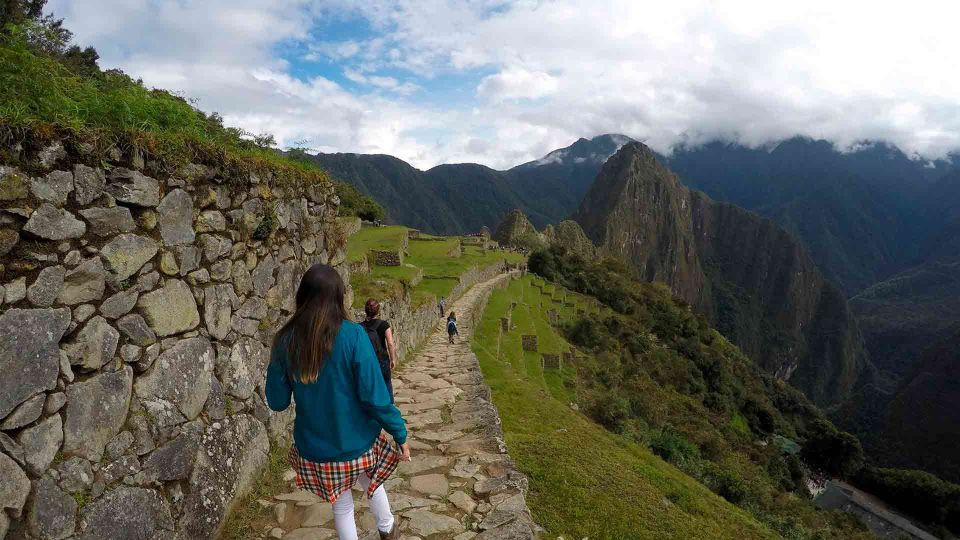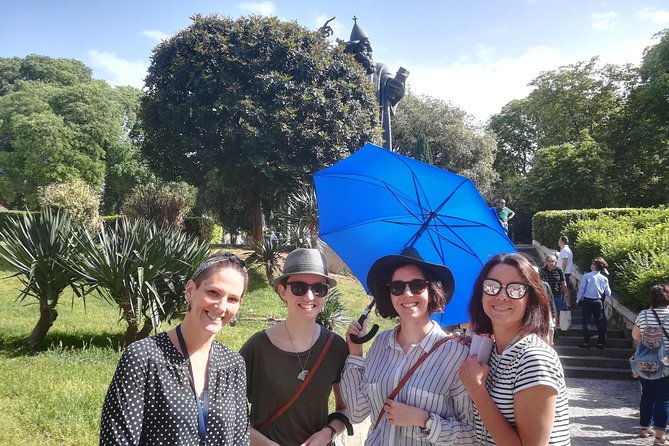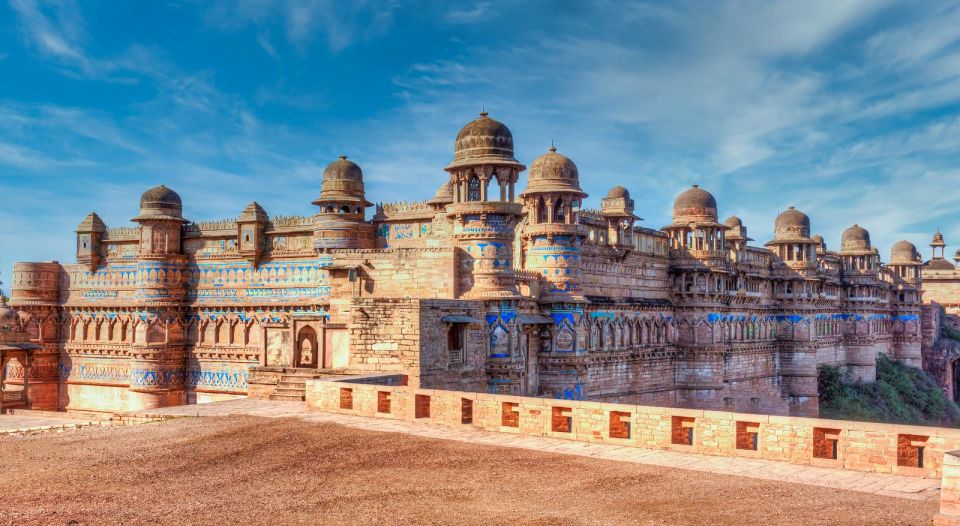Set out on a journey through the labyrinth of Japanese culture, where the threads of mythology, tradition, and lifestyle are intricately woven into the tapestry of Shinto.
Like a key unlocking a hidden door, delving into the depths of Shinto unveils a world where nature, spirits, and rituals intertwine.
As the ancient beliefs come to life through sacred shrines and vibrant festivals, a deeper understanding of Japanese identity emerges.
Explore the essence of kami spirits, the soul of Shinto, and learn about a realm where tradition meets modernity, offering a fascinating glimpse into the heart of Japan’s cultural landscape.
Key Points

- Shinto offers insight into Japanese culture, beliefs, and lifestyle.
- Shintoism emphasizes rituals, ceremonies, and connection to nature.
- Shinto shrines host festivals, rituals, and traditional practices.
- Shinto’s influence is seen in art, architecture, ethics, and Japanese identity.
It's also worth checking out some other tours and experiences nearby.
Shintoism: Ancient Japanese Religion
Shintoism, an ancient Japanese religion, dates back centuries and continues to play a significant role in Japanese culture and beliefs today. Rooted in Japanese mythology, Shintoism revolves around the worship of kami, which are spirits believed to inhabit natural elements and ancestors.
Shinto ceremonies, such as purification rituals before entering shrines, are essential practices that highlight the close connection to nature. Japanese mythology, intertwined with Shinto beliefs, shapes the rituals and traditions followed by practitioners. The influence of Shintoism can be seen in various aspects of Japanese life, from art and architecture to national holidays.
With over 80,000 Shinto shrines in Japan, the impact of this ancient religion on Japanese identity and ethics remains profound.
Shinto Rituals and Traditions
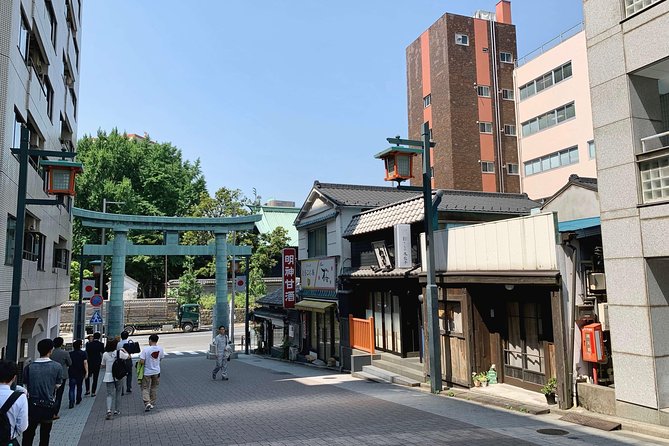
In Shinto rituals and traditions, participants engage in practices that emphasize a deep reverence for nature and ancestral spirits. These ceremonies and traditions play a crucial role in connecting individuals to the spiritual world and maintaining harmony with the kami. Some key aspects include:
-
Purification ceremonies: Before entering shrines, individuals cleanse themselves to show respect and purity.
-
Prayer rituals: Offerings and prayers are made to kami for blessings and guidance.
-
Omikuji: Fortune-telling paper strips are used to seek answers from the spirits.
-
Ema: Wooden plaques where wishes and prayers are written for the kami to fulfill.
Shinto Beliefs in Kami Spirits
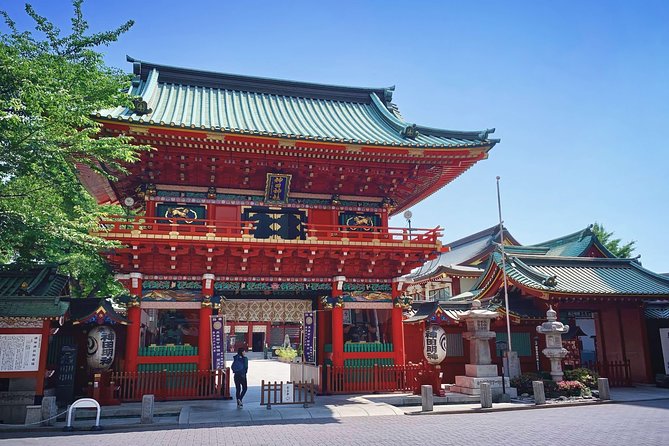
Kami spirits, integral to Shinto beliefs, embody natural elements and ancestral connections in Japanese culture. Kami worship is central in Shintoism, where these spirits are revered for their spiritual connection to nature and the past. Worship involves offerings, prayers, and rituals that highlight the close relationship between humans and the divine. Here is a glimpse into the significance of kami spirits in Shinto beliefs:
| Kami Spirits | Description | Importance |
|---|---|---|
| Natural Elements | Spirits representing natural phenomena like wind | Respect for nature |
| Ancestral Spirits | Ancestors revered as kami spirits | Honoring heritage |
| Object Spirits | Spirits dwelling in objects like rocks | Spiritual connection |
Through kami worship, the Japanese people maintain a profound spiritual connection to their surroundings and ancestors.
Shinto Shrines and Festivals
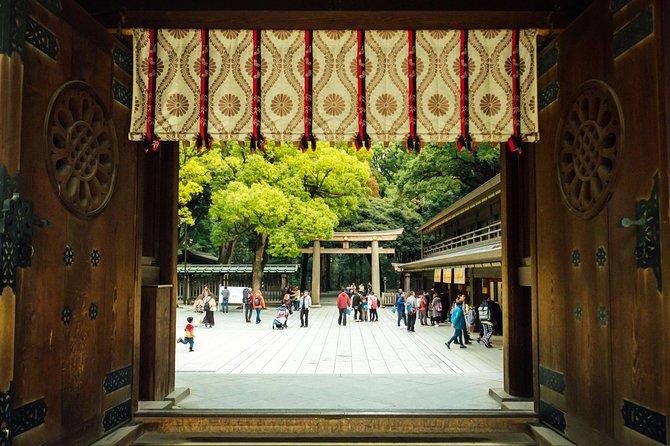
Shrines and festivals play a vital role in showcasing the rich cultural heritage and traditions of the Shinto religion in Japan.
- Shrine Architecture
- Festival Traditions
- Torii Gates
- Purification Fountains
Shrine architecture in Shinto is characterized by its distinct features such as torii gates and purification fountains, creating a sacred atmosphere for worshippers. Festivals are an integral part of Shinto tradition, where communities come together to celebrate and honor the kami spirits through various rituals and ceremonies. These festivals offer a glimpse into the vibrant cultural tapestry of Japan and provide a deeper understanding of the spiritual significance embedded in Shinto practices.
Shinto Influence on Japanese Life
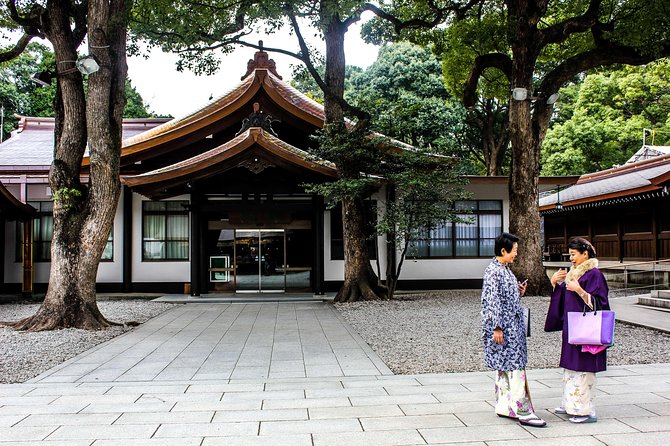
With a deep-rooted connection to nature and everyday life, Shinto beliefs subtly shape various aspects of Japanese society and customs. Shinto practices, such as purification rituals before entering shrines, omikuji fortune-telling, and matsuri festivals, are deeply ingrained in Japanese culture. The cultural impact of Shinto is evident in the over 80,000 Shinto shrines across Japan, each varying in size and significance. Visitors cleanse themselves at purification fountains before entering these shrines, which often feature torii gates. Shinto’s influence extends to Japanese ethics, identity, and even national holidays. The worship of kami, spirits representing natural elements and ancestors, involves offerings and prayers, showcasing how Shinto is intertwined with various aspects of Japanese life.
| Shinto Practices | Cultural Impact |
|---|---|
| Purification rituals | Deeply ingrained |
| Omikuji | Fortune-telling tradition |
| Matsuri | Festivals and celebrations |
| Torii gates | Symbol of Shinto shrines |
| Kami worship | Connection to ancestors |
Shinto Art and Architecture
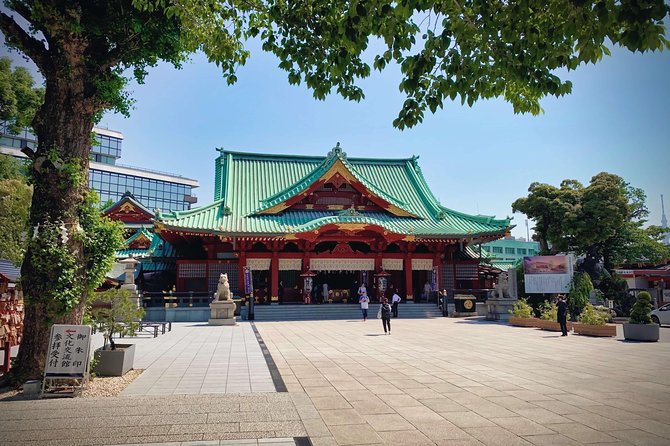
Influencing both visual aesthetics and spiritual experiences, Shinto art and architecture reflect a harmonious blend of tradition and symbolism.
- Shinto architecture often features distinct elements like torii gates and purification fountains.
- Artistic expressions in Shinto encompass various forms such as painting, calligraphy, and sculpture.
- Architectural symbolism in Shinto structures represents the connection between the physical and spiritual realms.
- Art in Shinto is used to depict kami, nature, and myths, conveying deep cultural meanings.
Shinto art and architecture not only serve as beautiful creations but also hold profound spiritual significance, showcasing the intricate relationship between the material world and the divine in Japanese culture.
Shinto’s Role in Japanese Identity
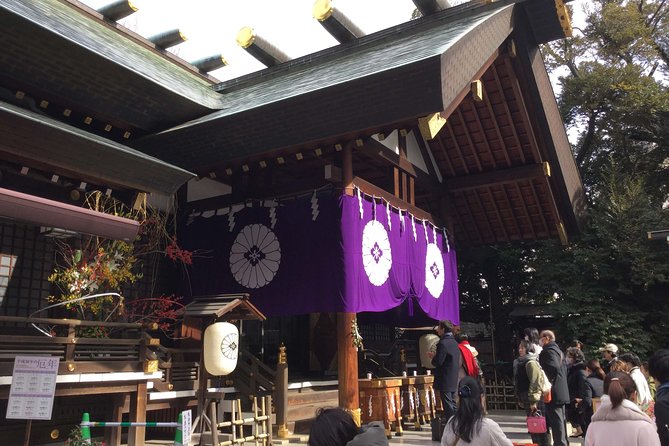
Playing a pivotal role in shaping the collective identity of the Japanese people, Shinto weaves intricate threads of tradition, spirituality, and cultural heritage into the fabric of society. Shinto is deeply intertwined with Japanese heritage, influencing various aspects of daily life and societal norms.
From rituals honoring kami spirits to the reverence for nature and ancestral connections, Shinto plays a significant role in defining Japanese cultural identity. The belief in kami spirits and the emphasis on purification rituals before entering shrines reflect the core values and beliefs that have been passed down through generations.
Shinto’s influence can be seen in Japanese art, architecture, and even national holidays, illustrating its enduring impact on shaping the essence of what it means to be Japanese.
Here's a few more nearby tours and experiences we think you'll like.
Common questions
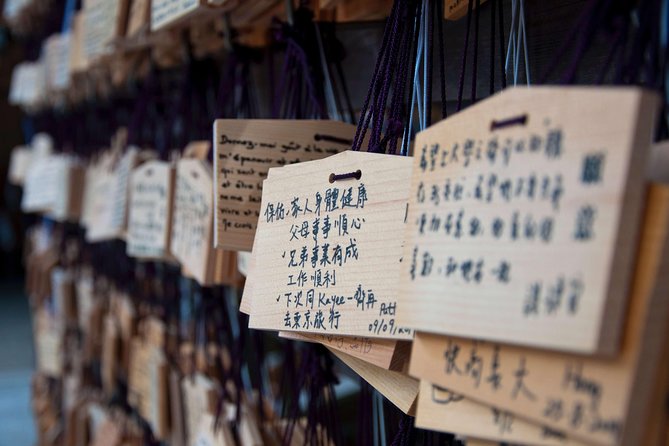
How Do Individuals Become Shinto Priests or Priestesses?
To become Shinto priests or priestesses, individuals undergo a rigorous training process, acquire necessary qualifications, and take on responsibilities like conducting ceremonies, offering prayers, and guiding worshippers. The role involves deep spiritual connection and community service.
What Role Do Sacred Animals Play in Shinto Rituals?
In Shinto rituals, sacred animals, like foxes and wolves, symbolize various aspects of nature and spirituality. They act as messengers and guardians, embodying the connection between humans and kami, showcasing the rich folklore and spiritual traditions.
Are There Any Specific Taboos or Prohibitions in Shinto Practices?
In Shinto practices, there are specific taboos and prohibitions that guide Shinto etiquette and purification rituals. Cultural superstitions and spiritual customs dictate behaviors such as avoiding impurity, showing respect to kami, and following traditional rites.
How Do Shinto Beliefs Influence Modern Japanese Politics and Society?
Shinto beliefs deeply influence modern Japanese politics and society. Political decisions often consider cultural significance, reflecting contemporary relevance. Shinto’s emphasis on tradition and nature shapes societal values, fostering a unique connection to heritage and spirituality.
What Are Some Lesser-Known Shinto Festivals or Ceremonies That Are Not Widely Celebrated?
When exploring Shinto, one may uncover regional celebrations like the Aoi Matsuri in Kyoto or the Kanda Matsuri in Tokyo. These hidden traditions offer insights into Japan’s cultural tapestry, showcasing uncommon ceremonies and folk rituals.
Not for you? Here's more of our most recent tour reviews happening neaby
- Asia Travel Esim Plan for 8 Days With 6GB High Speed Data
- [Private] Tokyo Personalized Tour (Guide Only)
- Tokyo Arrival Private Transfers From Tokyo-Narita Airport NRT to Tokyo City
- 3 Day Tokyo to Kyoto Tour (Hotels, Transport and Guide Included)!
- Private Transfer From Narita Airport to Tokyo
- Private Tokyo Tour, Build Your Own Itinerary With a Local Matched to You
- Harajuku Sweet & Culture Exploration: Dive Into Kawaii Wonders!
- Sushi Making Experience in Shinjuku, Tokyo 2 Hours
- Full-day Immersive Private Tour in Tokyo
- Transfer in Private Vehicle From Tokyo City Center to Narita Airport
- Tokyo Walking Tour With a Local Guide
- Kamata Tokyo: Culinary Delights & Local Life Adventures!
- Tokyo Tour Off-The-Beaten-Path, Shimokitazawa With a Local, Private Custom
- Tokyo to Tokyo Narita Airport (NRT) – Departure Private Transfer
- Complete Tokyo Tour in One Day! Explore All 10 Popular Sights!
Sum Up
To sum it up, delving into the world of Shinto has offered a fascinating glimpse into the heart of Japanese culture and tradition.
From the reverence of nature and spirits to the intricate rituals and festivals, Shinto plays a significant role in shaping the identity of Japan.
By exploring the ancient religion of Shinto, one can truly appreciate the rich tapestry of beliefs, practices, and art that continue to influence Japanese life and society today.



